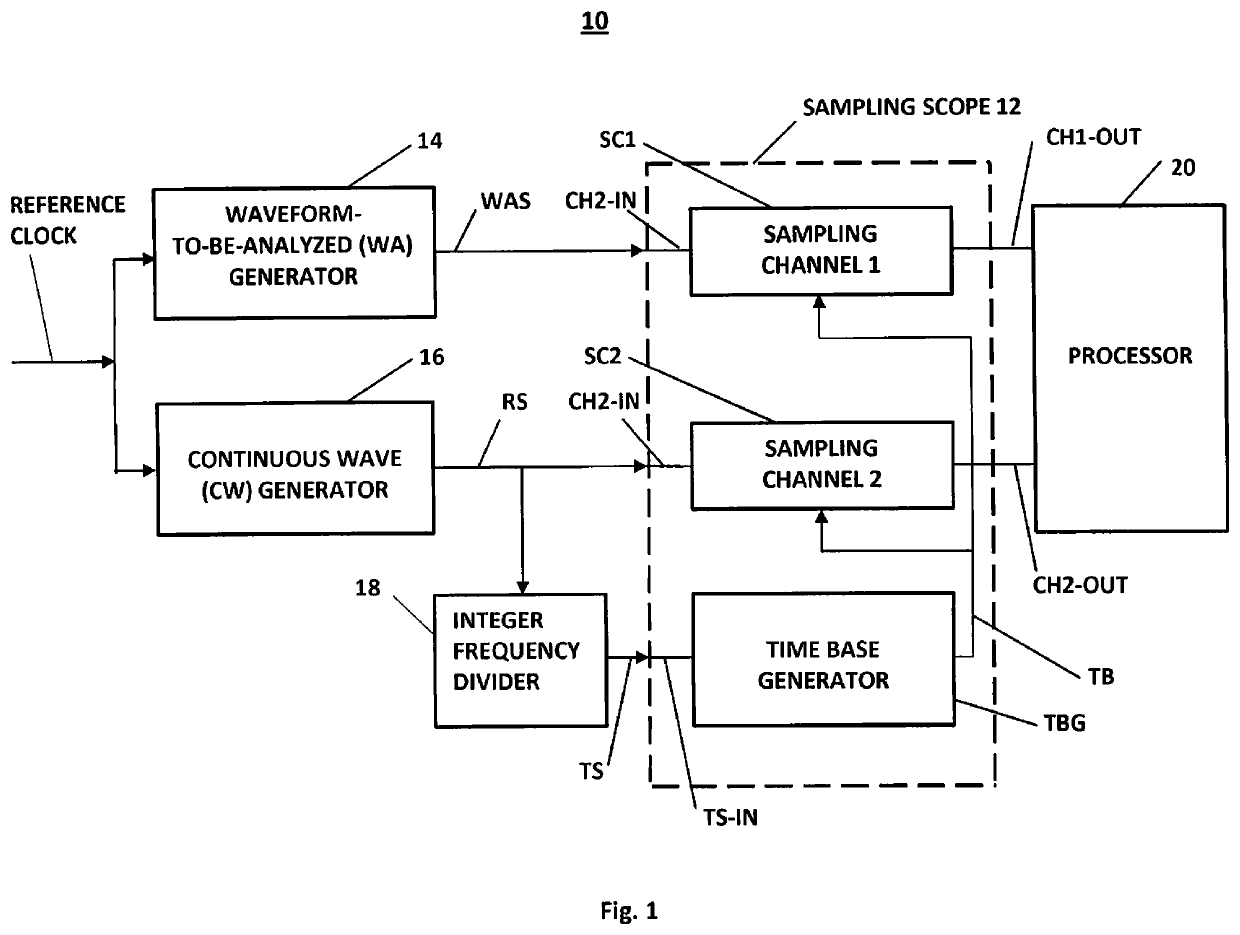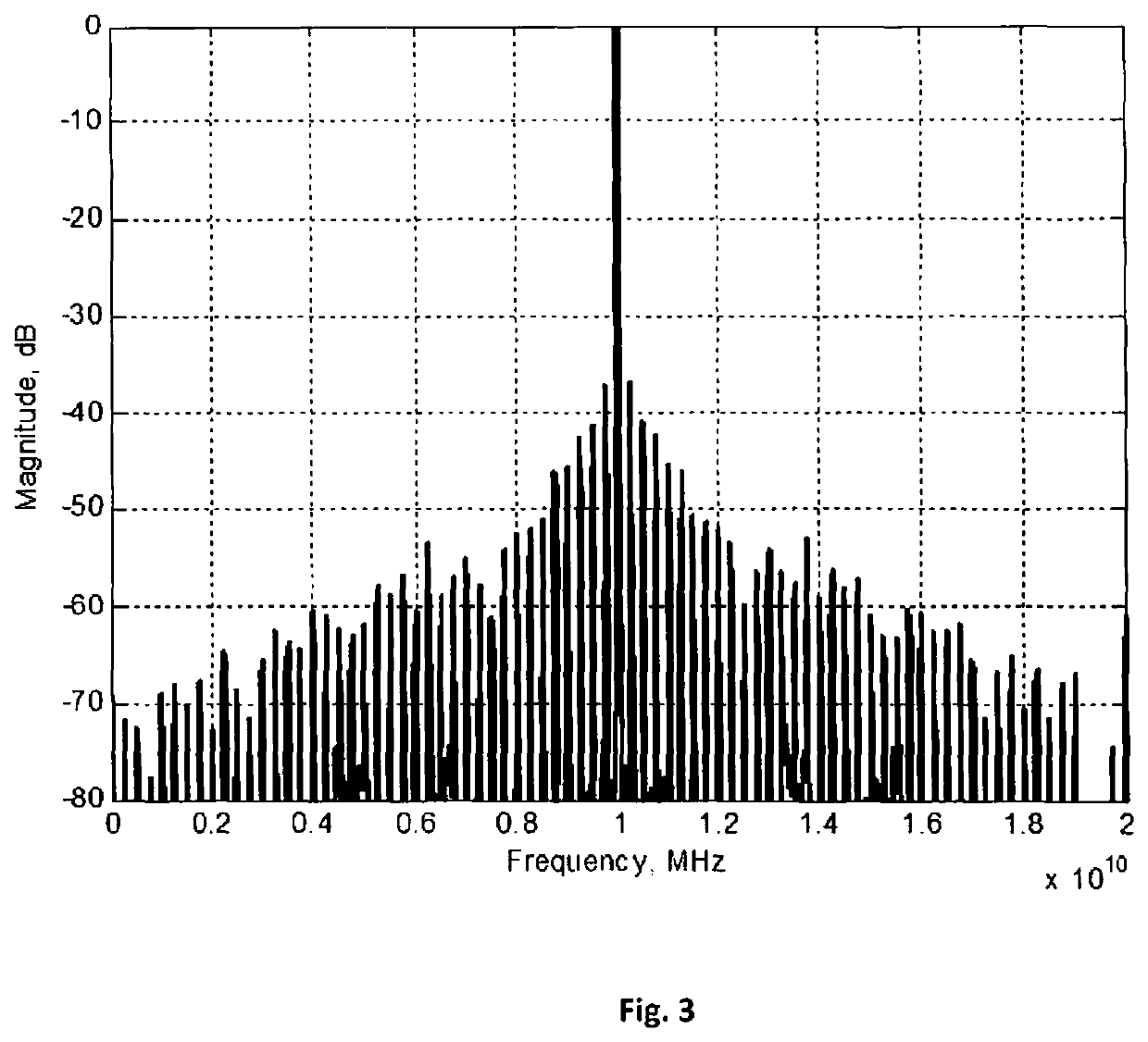Time base correction method for high accuracy sampling scope-based measurements
a time base correction and high-accuracy technology, applied in electromagnetic transmission, instruments, transmission, etc., can solve the problems of generation of high frequency quadrature signals, insufficient time base accuracy obtained, and considerable attention to time base accuracy
- Summary
- Abstract
- Description
- Claims
- Application Information
AI Technical Summary
Benefits of technology
Problems solved by technology
Method used
Image
Examples
Embodiment Construction
[0038]Time base distortion varies over time and depends on a number of factors, such as a sampling rate of a signal-to-be-analyzed, acquisition time for such a signal, ambient temperature and others. In view of these factors, in accordance with a form of the invention, measurement system 10, illustrated in FIG. 1, a time base distortion measurement for a signal-to-be-analyzed is performed using a 2-channel sampling oscilloscope (or scope) 12. In an exemplary form, the 2-channel sampling scope 12 includes two sampling channels, sampling channel 1 (SC1), having an input CH1-IN and an output CH1-OUT, a sampling channel 2 (SC2), having an input CH2-IN and an output CH2-OUT, and a time base generator TBG, providing sampling signal TB to inputs of the respective sampling channels SC1 and SC2. The time base generator TB includes a trigger signal input TS-IN for receiving an applied trigger signal TS. In the illustrated form, a common reference clock characterized by a repetition period Tw,...
PUM
 Login to View More
Login to View More Abstract
Description
Claims
Application Information
 Login to View More
Login to View More - R&D
- Intellectual Property
- Life Sciences
- Materials
- Tech Scout
- Unparalleled Data Quality
- Higher Quality Content
- 60% Fewer Hallucinations
Browse by: Latest US Patents, China's latest patents, Technical Efficacy Thesaurus, Application Domain, Technology Topic, Popular Technical Reports.
© 2025 PatSnap. All rights reserved.Legal|Privacy policy|Modern Slavery Act Transparency Statement|Sitemap|About US| Contact US: help@patsnap.com



